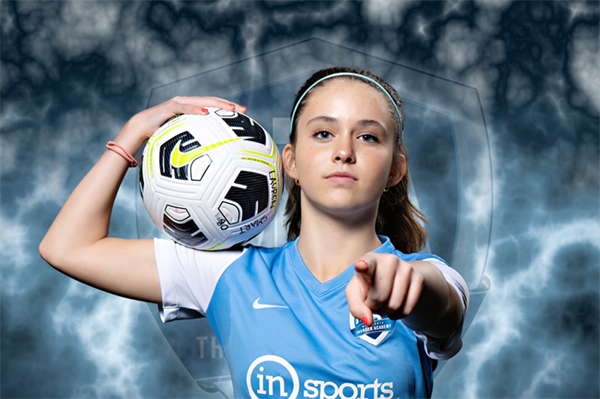The Evolution of Youth Sports Photography Techniques

Over the past several decades, youth sports photography has transformed from grainy film snapshots to vibrant digital imagery capturing every thrilling moment of the game. At Sports Star Photography, we’ve seen how advancements in camera technology, lighting techniques, and editing tools have reshaped the way young athletes’ achievements are immortalized on the field and court.
From early manual SLR cameras to today’s high-speed mirrorless systems, the evolution of sports photography has been driven by a pursuit of sharper, faster, and more dynamic images. In the sections that follow, we’ll explore five pivotal developments shaping this evolution: Transition from Film to Digital: A Historical Perspective, Role of Advanced Lighting in Modern Sports Portraits, Impact of High-Speed Cameras on Action Shots, Integration of Drones for Unique Angles and Post-Processing Software: Enhancing Image Quality.
Keep reading to uncover the techniques behind these landmark innovations!
Transition from Film to Digital: A Historical Perspective
Before the late 1990s, youth sports photographers relied on 35 mm film and manual SLR cameras. Photographers selected film stocks with specific ISO ratings, metered exposure by hand, and captured each moment without immediate feedback. Rolls of film were sent to labs for chemical development, where scans or prints were produced days later—a process that required careful planning and limited the number of shots per session.
The advent of digital sensors—first CCD, then CMOS—shifted the industry. Photographers gained the ability to shoot hundreds of frames per session, instantly review shots on LCD screens, and adjust settings on the fly. Digital cameras offered much wider ISO ranges without noticeable grain, enabling sharp images under gymnasium or twilight field conditions.
Digital workflows also transformed image delivery. Instead of mailing negatives, professionals now upload RAW files to secure online galleries for families to browse. Turnaround times have dropped to two weeks or less, and integrated ordering systems simplify print and product delivery. The result is a more efficient, scalable approach to youth sports photography.
Role of Advanced Lighting in Modern Sports Portraits
Controlled lighting has become essential for capturing flattering sports portraits. Off-camera strobes and softboxes shape facial features and uniforms, creating depth and dimension. By positioning lights at varying angles, photographers can freeze motion with short flash durations while maintaining consistent exposure.
Battery-powered LED panels and high-output strobes deliver reliable light even in remote venues. Color-balanced fixtures and precise white-balance calibration ensure skin tones remain natural under mixed ambient lighting. Portable lighting setups allow photographers to maintain a uniform look across individual and team portraits.
On busy league or school photo days, custom lighting plans and remote triggers enable consistent shots of dozens of athletes. By designing each scene—using branded backdrops and coordinated light intensities—photographers achieve cohesive results without slowing down the schedule.
Impact of High-Speed Cameras on Action Shots
High-speed cameras capable of 10–30 frames per second have redefined action photography. Fast shutter speeds—often 1/2000 sec or higher—freeze dynamic movements such as mid-air leaps and ball impacts. Wide continuous-shooting buffers capture critical sequences, letting photographers select the single frame that best represents peak athletic performance.
Modern autofocus systems combine subject-tracking algorithms with eye detection, ensuring athletes remain razor-sharp even when sprinting toward the lens. Electronic viewfinders on mirrorless bodies provide blackout-free live previews, allowing precise timing when framing decisive moments.
Advances in memory card write speeds and burst depth minimize frame loss during prolonged sequences. Photographers can now cover entire games in rapid-fire bursts, reliably capturing each critical play without compromise.
Integration of Drones for Unique Angles
Drones have opened aerial perspectives once reserved for broadcast productions. Lightweight UAVs equipped with stabilized gimbals capture sweeping overhead views of fields, courts, and stadiums. These shots add context to team formations and highlight the scale of youth sports events.
Dynamic drone moves—rising reveals, tracking shots along sidelines—offer storytelling opportunities beyond sideline stills. Aerial angles showcase plays in motion, illustrating player positioning and field strategies that ground-level images cannot convey.
Operators must follow FAA guidelines, maintain visual line-of-sight, and secure event permissions. Competent pilot certification and safety protocols ensure compliance and protect athletes, spectators, and equipment during flights.
Post-Processing Software: Enhancing Image Quality
Raw conversion tools provide granular control over exposure, white balance, and tonal curves, bringing out detail in highlights and shadows. Precise color calibration ensures accurate team colors and uniform consistency across images.
Advanced noise-reduction algorithms and lens-profile corrections remove digital artifacts and distortion, resulting in clean, professional output. Local adjustment brushes and graduated filters refine individual areas without affecting the entire frame.
Batch-processing capabilities streamline workflows for large-volume shoots, applying consistent edits across hundreds of files. Creative retouching, compositing, and graphic overlays elevate images to publish-ready quality at Sports Star Photography.
How Sports Star Photography Can Support Your Youth Sports Photography Needs
Sports Star Photography combines decades of film-era expertise with modern digital innovations to deliver high-impact imagery for youth athletes. Located at 18336 Minnetonka Blvd, Wayzata, MN 55391, we offer customized photo designs, large-scale team capacity, and a two-week turnaround on all image galleries.
Ready to capture your next game, portrait day, or aerial highlight reel? Call us at 612-824-3509 or contact us online to discuss scheduling, lighting design, and advanced post-processing tailored to your team or league!